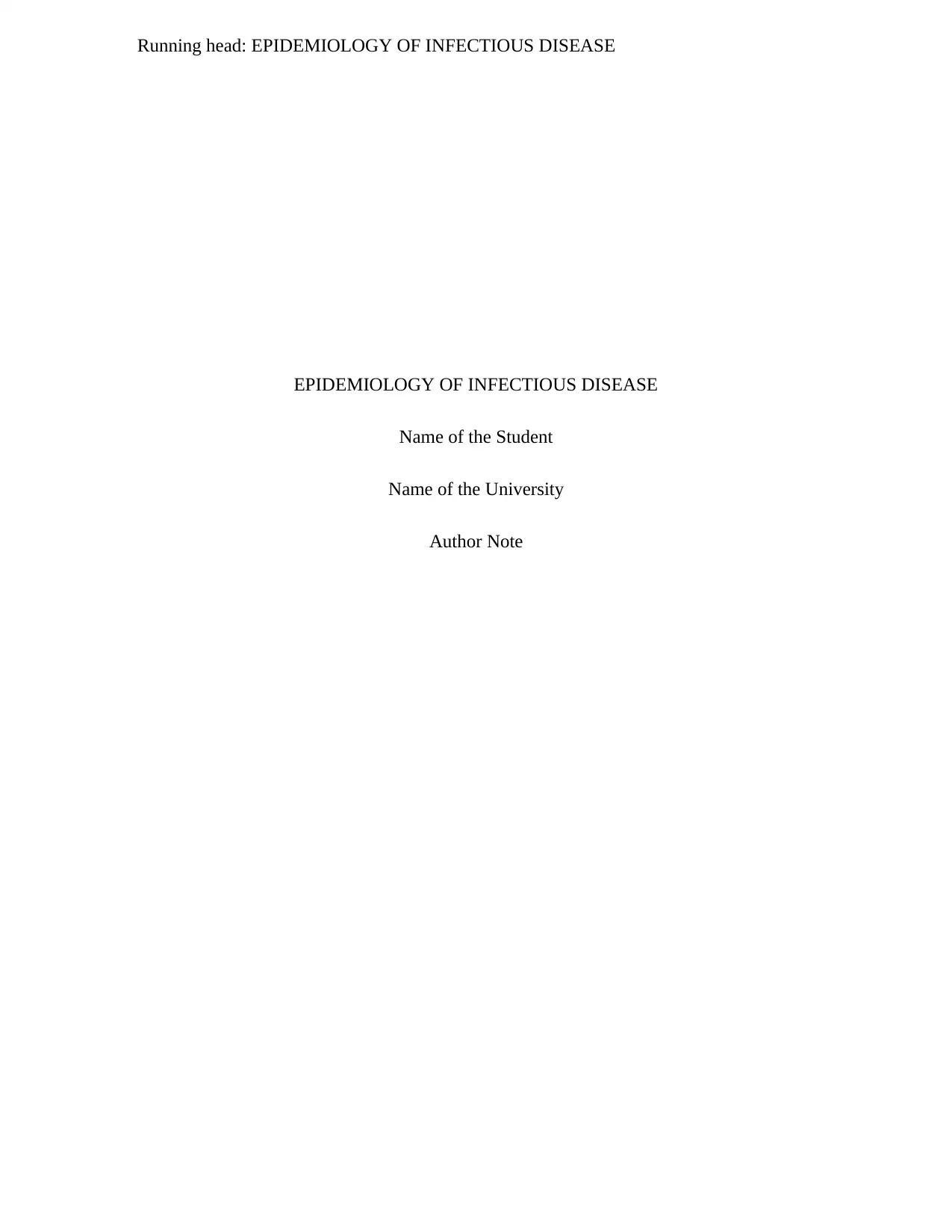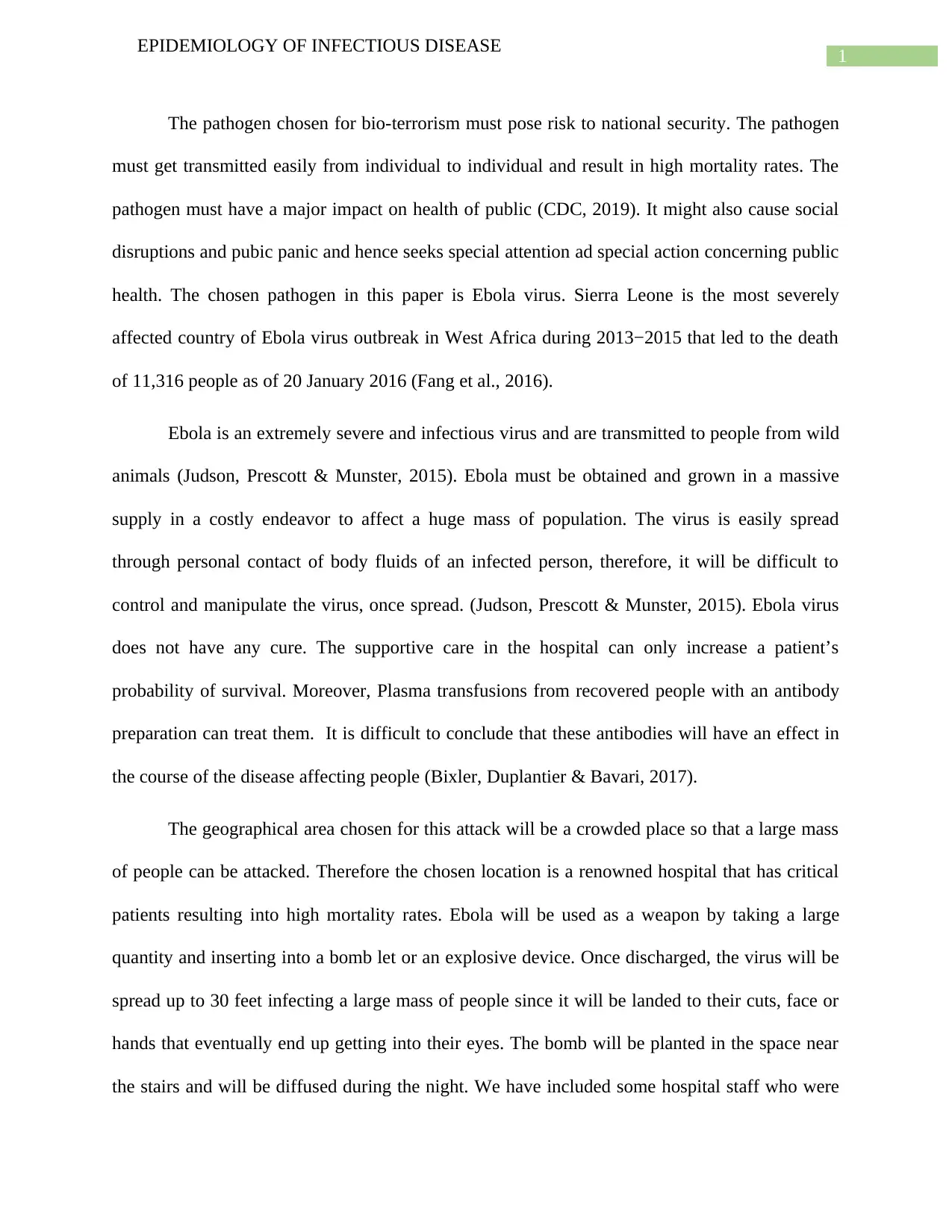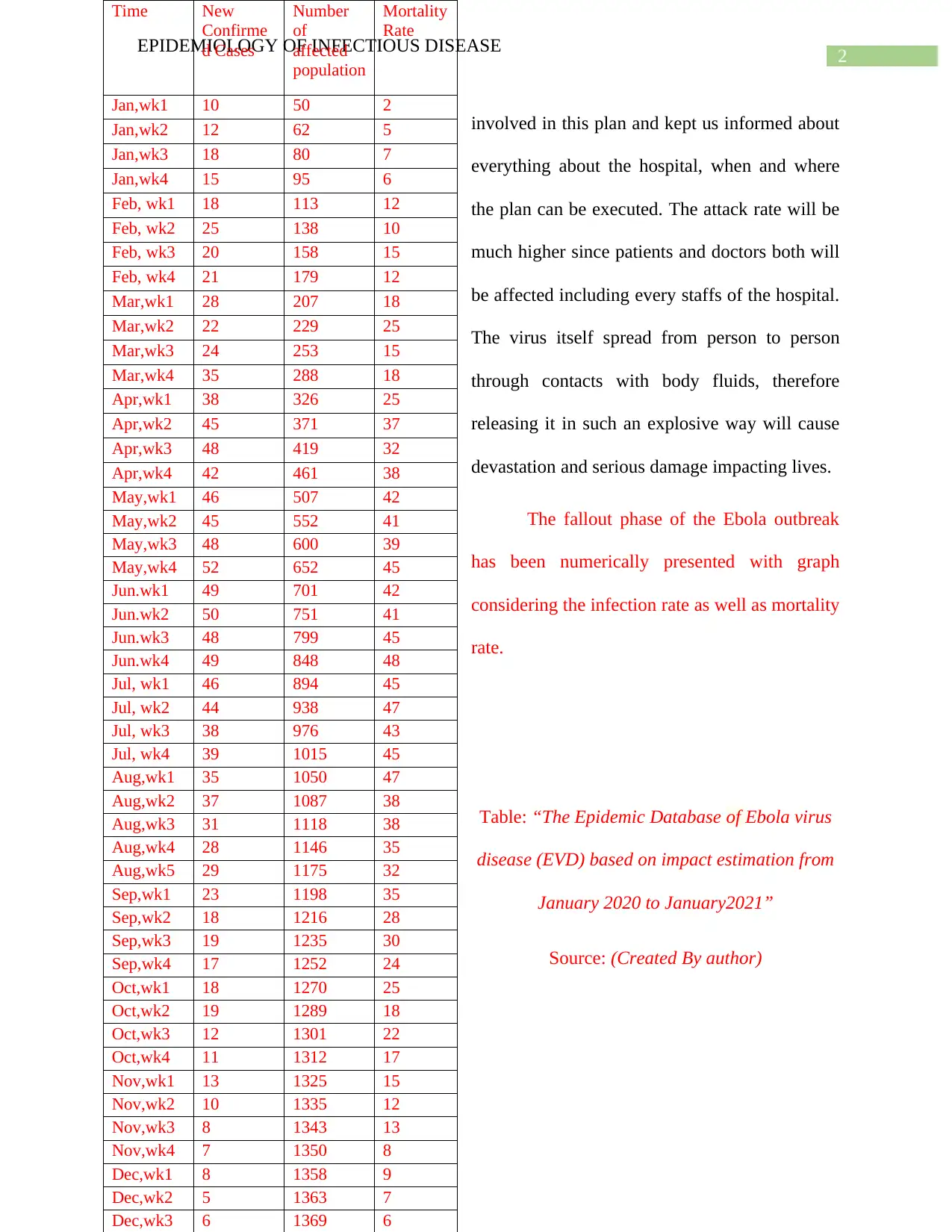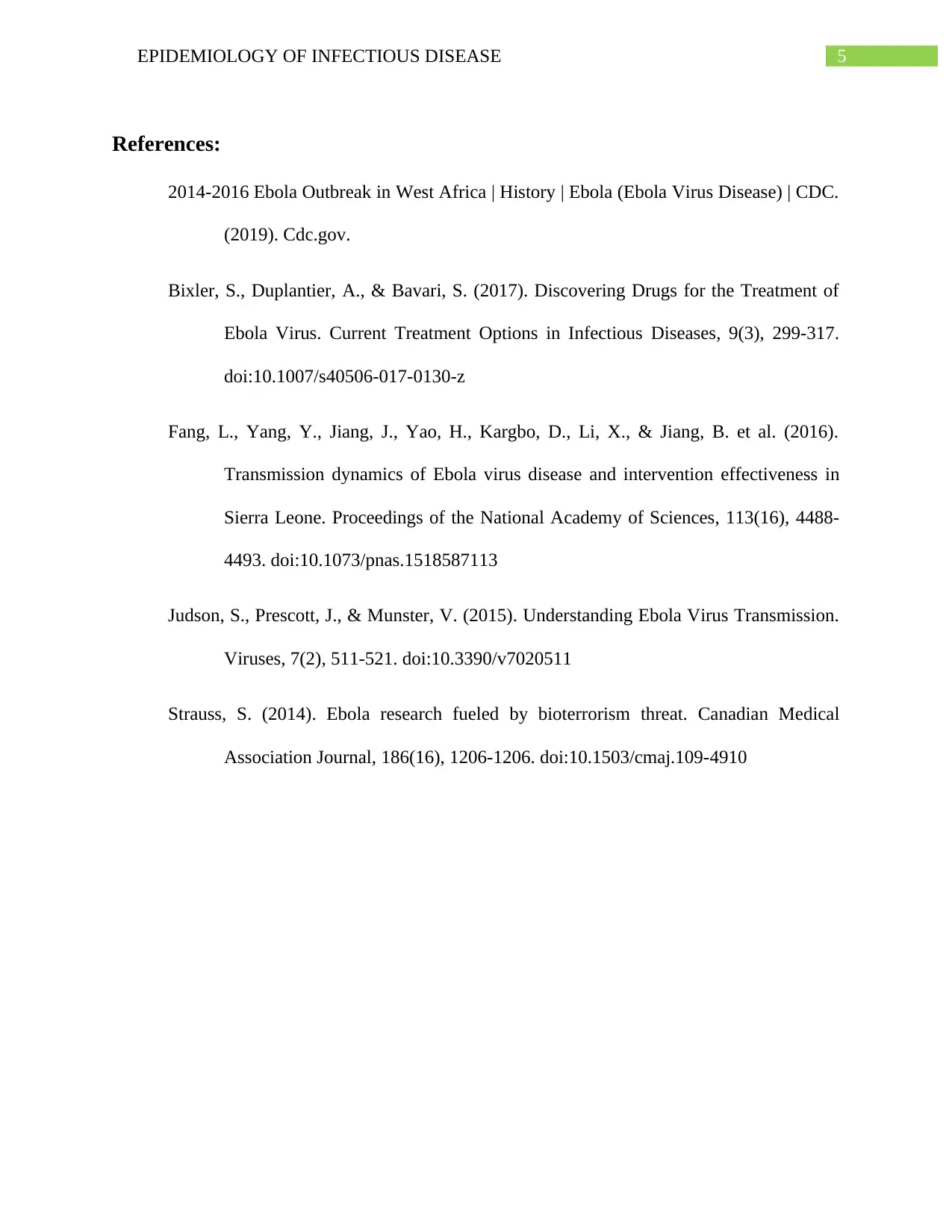Epidemiology of Ebola Virus: A Bioterrorism Report
VerifiedAdded on 2022/11/23
|5
|1109
|144
Report
AI Summary
This report delves into the epidemiology of the Ebola virus, focusing on its characteristics as a potential bioweapon. It highlights the virus's high mortality rate, ease of transmission through bodily fluids, and the challenges in developing effective treatments. The report uses the 2013-2015 Ebola outbreak in Sierra Leone as a case study, examining the impact on public health and the factors that contribute to its spread. It includes a table and a figure depicting the epidemic's progression and uses this data to illustrate the devastating consequences of an Ebola outbreak. The report also explores the potential for using Ebola in a bioterrorism attack, considering the virus's ability to cause widespread panic and social disruption, and the challenges in controlling it. The report concludes by emphasizing the need for public health preparedness and rapid response strategies to mitigate the impact of such a threat. The report is contributed by a student to be published on the website Desklib. Desklib is a platform which provides all the necessary AI based study tools for students.
1 out of 5












![[object Object]](/_next/static/media/star-bottom.7253800d.svg)